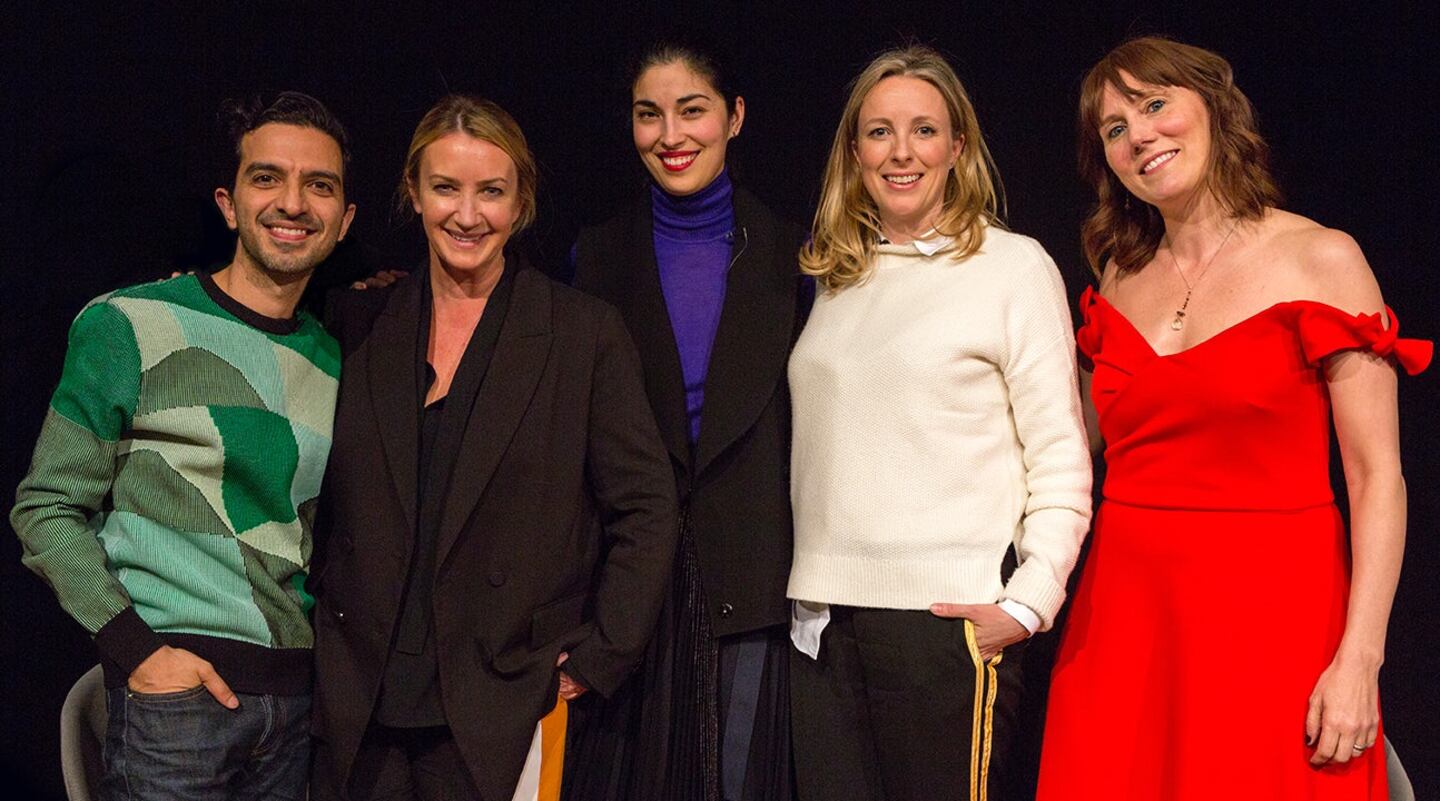
The Business of Fashion
Agenda-setting intelligence, analysis and advice for the global fashion community.

Agenda-setting intelligence, analysis and advice for the global fashion community.

LONDON, United Kingdom —"The fashion industry … is a real industry, it sounds glamorous and at times it is, but I think it's important to talk about what it really is," said Anya Hindmarch on Wednesday evening at the first edition of "Inside the Industry", a new event series from The Business of Fashion in collaboration with Topshop, intended to open, connect and inform the next generation of breakthrough talent.
In a panel moderated by BoF's CEO and editor-in-chief Imran Amed at Central Saint Martins' LVMH lecture hall in London, Hindmarch was joined by Caroline Issa, chief executive and fashion director at Tank Magazine and Tank Form, Stephanie Phair, chief strategy officer at Farfetch, and Jenny Cossons, head of brand partnerships at Lyst.
In a frank discussion in front of over 200 students and a Facebook Live audience of thousands, the group described how the nature of work within the fashion industry has changed over the course of their careers.
“It's not just about being a designer, buyer or marketer,” said Phair. “The rise of the internet has opened so many more jobs than even five years ago.”
ADVERTISEMENT
Cossons agreed, advising students to “work hard, be smart and adaptable … If I think about the last 20 years that I've been working in this [industry] and what it used to be and what it is now, it’s completely different,” she said.
Nor, indeed, is there a prescribed path into the fashion industry.“Fashion is my third career in a way,” said Cossons, who worked as a museum curator before becoming a fundraiser for Harvard University, which in turn led to a job on the advertising team at Vanity Fair.“There's no set route and no special way. The really exciting thing for students is that there's a spot for everyone [in the fashion industry],” she added.
The rise of the internet has opened so many more jobs than even five years ago.
Likewise, Phair, who studied philosophy, politics and economics at Oxford University, went on to launch TheOutnet.com in 2009. Certainly, for Hindmarch, an understanding of the business and operations side of fashion is key.“You need to be savvy about business,” she said. “Learn about the supply chain, financing, cash flow, talent and distribution, not just the creative. If you start as a creative you unfortunately spend very little time designing because you'll be running a business.”
The panellists agreed that in order to succeed in fashion, characteristics including being prepared, adaptive and solution-driven, remain important.“You have to be incredibly flexible but also curious [about] what's happening in the greater world. Question what drives things,” said Issa, who added that it is important not to limit yourself to a specialism until you know for certain it is what you want to do.“You have to train yourself to not fear change. It's crucial today. There are a lot of people that I see that like to do the same things for a long time, and it's no longer a time that you can hide away and do [that].”
A concern for all the panellists remains the underrepresentation of women in leadership positions in the fashion industry. Despite the fact that women are the primary end consumers of fashion, only 14 percent of the top 50 fashion brands are run by women according to a BoF survey.
https://www.youtube.com/watch?v=Wluh_3WHej8&feature=youtu.be
“The research says that women are shown to be less assertive, less confident and less willing to say and ask what they want in order to be successful and grow. We need to support women and have them progress,” argued Amed.
“At the more junior level it is fifty-fifty. But as you go up to higher levels, women do drop off as they go up the career ladder and that I do think is a problem,” Phair said.“We should focus on encouraging and motivating women and making them feel that it's worth the investment [to keep working].” “There is a cultural element of not wanting to rock the boat,” added Cossons. “I feel a big responsibility to be an example.”
ADVERTISEMENT
And yet, while fashion is not without its challenges, not least the threats of globalisation, changing consumer culture and an unstable political climate, the panellists remained optimistic about the future of the industry.
“Fashion is a superstar,” said Hindmarch. “It's incredibly diverse, contributes greatly to the GDP of the country and it's much deeper than just a frivolous thing. It's identity and confidence, and we should shout out for it a bit more.”
Related Articles:
[ 5 Lessons on How to Build a Business in FashionOpens in new window ]
[ Six Fashion Careers of the FutureOpens in new window ]
[ 5 Things Fashion Students Need to Know in 2017Opens in new window ]
[ How Can we Nurture the Next Generation of Fashion Designers?Opens in new window ]
Discover the most exciting career opportunities now available on BoF Careers — including jobs from Hugo Boss, Banana Republic and House of CB.
To provide actionable insights and inspiration on how fashion and retail industries can further embed diversity, equity and inclusion in the workplace and business strategies today, BoF Careers co-hosted a panel discussion with The Outsiders Perspective. Now, BoF shares key learnings from the panel.
A US regulator has banned most uses of the clauses, which started as a way for fashion companies to prevent senior executives from walking off with trade secrets, but have become a standard retention tool.
Check out this week’s new partners and openings on BoF Careers, the global marketplace for fashion talent.